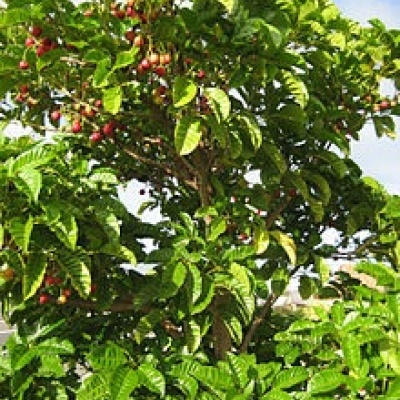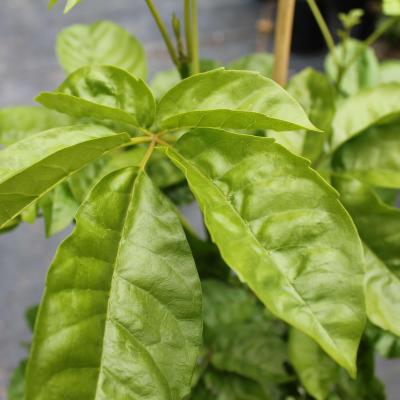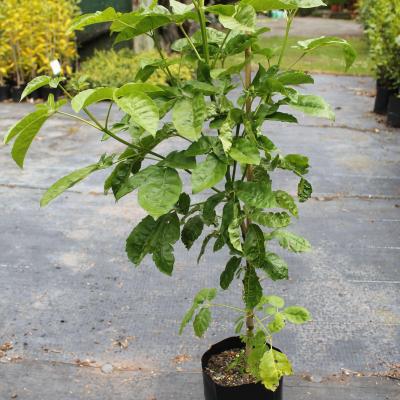One of our large forest trees found from Mahia Peninsula and Taranaki northwards. Clusters of red fruit appealing to wood pigeon follow pinkish red flowers.
Puriri is endemic to New Zealand and can be found in the upper half of the North Island from North Cape to the Waikato and Upper Thames, and from thence in small numbers southwards to Mahia Peninsula on the east coast and Cape Egmont. The Puriri tree can grow up to 20 m tall, with a trunk commonly up to 1.5 m in diameter. Puriri was actively and selectively logged in the past to provide timber for a wide range of end uses. Only the best trees were felled, leaving the gnarled puriri often found on farm paddocks. This has given the impression that puriri is incapable of growing straight, but early reports of puriri describe naturally clear boles of 15 to 30 feet (4.5 to 9 m)(5) and there are still a few trees like that left. A good example of a well-shaped tree is behind Ruapekapeka Pa in Northland.
Puriri is one of the few native trees with large colourful flowers. Many plants in New Zealand have white or green flowers. Some flowers can be found on the puriri all year round, though it does flower most heavily over winter. Ripe fruit can also be found all year round, but is more common over the summer. Puriri is a very important tree for native birds in the top half of the North Island because it provides a constant year-round food supply. Flowers and fruit are carried at the tips of the branches. The fruit is a bright red (usually) to a pale yellow (rarely, and only on white flowered trees) "cherry". It can grow as big as a cherry, but it is unpleasantly astripuriri is highly valued as an aid in increasing kereru (native pigeon) populations. Maintaining kereru populations is particularly important for natural restoration and maintenance of forest remnants, as this bird is the main disperser of large fruited species.
Puriri is also important as a host for a number of species. The puriri moth (or ghost moth) Aenetus virescens is New Zealands largest and quite spectacular moth, with a potential wing span up to 15 cm. Its 10 cm long larvae, though not restricted to puriri, often makes its home in the tree by excavating long "7"-shaped burrows . The moths are much reduced in number as the great swarms "invading rooms, sufficient in number to extinguish lighted lamps" reported by early settlers no longer occur(8). The wide spreading branches also provide room for epiphytic species such as Astelia, puka Griselinia lucida and northern rātā Metrosideros robusta(9).
Puriri in traditional Maori medicine has been used as a rheumatic remedy for centuries. Infusion of leaves used for ulcers, especially under the ears, 'keeping a rag constantly wet with the infusion.'
Severe inflammation caused by splinters in hands and feet. Leaves - boiled, bath sprains and backache.
Puriri is an invaluable food source for native wildlife, as it provides both fruit and nectar in seasons when few other species produce these, thus it is often used in restoration planting.
Stock Options
| SKU | Name | Size | Units in Stock (Approx) | Price |
|---|---|---|---|---|
| Vitex lucens | 1Lt | 0 | $9.95 | |
| Vitex lucens | PB3 | 300 | $12.95 | |
| Vitex lucens | PB8 | 50 | $19.95 | |
| Vitex lucens | PB40 | 0 | P.O.A. |
Interested in purchasing?
Please review our purchasing information and send an enquiry below.



